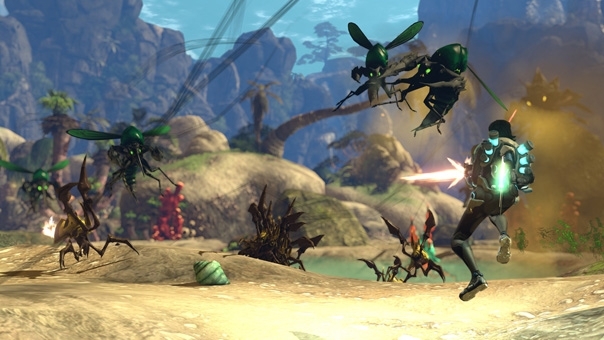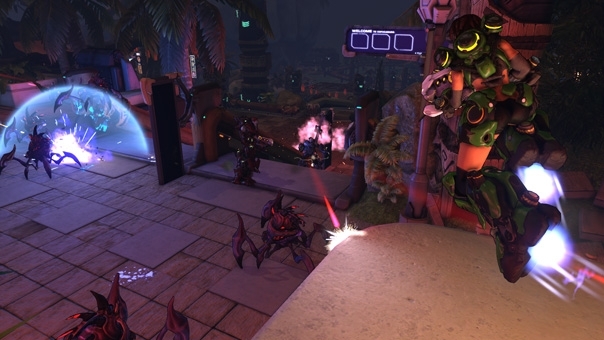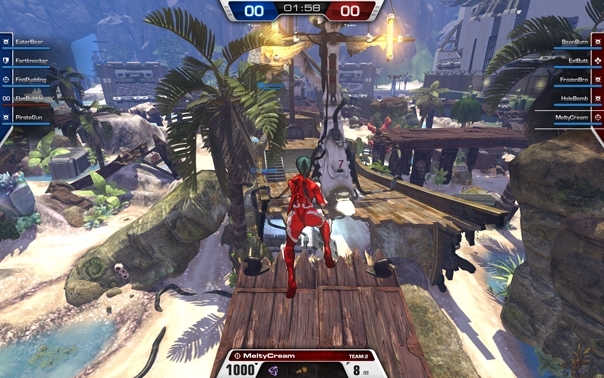FireFall: Interview with David Williams -- Part 1
We talk with Red 5's Lead Class Designer on every aspect of the game. In this first part, we talk about raising the skill cap, class revamps and the eSports toolkit.

FireFall is a game that tries to struggle out of the conventional MMO straightjacket in every way possible. Californian developer Red 5 Studios threw out the traditional MMORPG model, instead opting for dynamic, action oriented FPS combat. Where you’d normally expect rigid character class restrictions, instead you’re invited to play whatever way you’re in the mood for.
But how do you get that unique game feel and identity? For FireFall, its latest mega-patch seemed to be a strong push toward that identity. With an emphasis on improving the fluidity and flexibility of combat systems, the team added a range of customization options that are likely to keep players testing and tweaking for months if not years. It’s all been about raising the bar so that player skill, rather than character gear, is what counts.
I recently had the chance to meet with David Williams, Lead Class Designer on FireFall, for an early morning play-through at Gamescom. Our giant interview is so big we’ve had to break it up into two parts! In this section we cover how the team raised the skill cap, revamped the classes and built an eSports toolkit. Part two looks at how Williams tackled class balance, building world lore and the team’s approach to beta and free-to-play.

Getting the Skills
Earlier this month, FireFall received a mega-patch that revamped several areas of the game. The Medic class was replaced with Biotech, while the Engineer received a significant overhaul. Combat was also refreshed, with everything from movement speed to jump jet use being tweaked. As Williams explained to me, this was all about providing further depth as a player’s skill increases.
“We basically stopped doing our weekly updates because we had this really big patch that we wanted to do. There were some things about the game that weren’t really where we wanted them to be.”
“We thought that FireFall was easy to learn and easy to master. We loved the first part, because that helps people come into the game, but we wanted to raise the skill cap of the game, so that the really, truly, high skilled – crazy players – could differentiate themselves from the pack more than they could before.”
Besides changes to the combat system, the patch also included significant changes to the progression model. Williams and the team decided to ditch the traditional MMO model, with all its levels, and instead went for a tiered approach with players able to choose the skills they unlock.
“One of the big problems with the way we had progression, we found that using a traditional leveling system, there’s this really long period of time where you have no character advancement – no carrots – and you’re just playing and grinding the game. We wanted to go to a system where you constantly had a new carrot just ahead of you; a new reward or new upgrade always nearby.”
The result is that, instead of having fifty MMO levels to chew through, there are now five tiers of abilities. Each tier contains a tree of skills that can be bought for XP, with different paths allowing the player to focus on what they feel is important. As an example, I might choose to customize my Assault class with increased mobility, while someone else might prefer an increase in firepower.
Individual skills provide access to new hardware, from a fancy new weapon or ability, to unlocking “non-standard” jump-jets and armor available from the various military corporations. All of these hook onto a powered exoskeleton or Battleframe, which varies depending on the class and tier you’re currently playing. Swapping your class is as easy as taking a trip to your Battleframe garage. With all the choices available, Williams feels that there won’t be a generic “perfect” Battleframe, but one that’s best suited to an individual’s play style. As we start grouping up into teams, our Battleframes are likely to be refined further, to reflect the roles we perform.
“I really believe that, at a tournament level, people are going to have four or five configurations that they have ready to go, depending on the situation.”
Those Battleframe swap-outs might be to pick up damage absorption or counter sniper abilities, depending on the opposition team’s play style. There’s also a more intriguing prospect of teams reacting and counter-reacting during PvP matches, as both the tactics and Battleframes used to support them are changed.

Teaming Up: eSports and Armies
On the subject of tournament play, I asked Williams about Red 5’s drive to push FireFall as an eSports title. He was very clear that the team sees eSports as very important, both in creating fun PvP maps, such as the newly released Shantytown, or the powerful set of spectator tools. He explained to me that all of the parts that make up this new feature are things that professional shoutcasters have asked for. “We brought in five or six of the top eSports shoutcasters in the world, from all the different games, flew them all to our studio, and said that we want to make the best tool for shoutcasting. Give us a list.”
From what I saw, it must have been a heck of a list. As Williams took me through the tool’s capabilities, I was immediately grabbed by how powerful and straightforward it was to use. A range of fixed cameras around the map can be accessed using F keys, while number keys will follow a player. Even better, a Director mode will automatically flip to where it thinks the biggest action is, and there’s always full manual control to fall back on.
There’s also the ability to pause viewing while a live match is in progress, rewind and fast forward to replay action, and slow-motion playback to focus in on those tight action plays. Plus there’s a full range of on-screen stats available, including health, ammo and ability cooldowns of the player the camera’s focused on. It was like watching a cross between football and all night poker, only with gunfights and jump-jets thrown in for good measure.
It’s not only the shoutcasters that will be using this tool – Red 5 is making sure this gets into everyone’s hands. A PvPer might want to show off the killstreak he/she had in a match. A coach or captain might want to review the team’s performance in a game. The great news is both prerecorded and live matches can be watched using this tool. And in a killer blow, footage can be recorded and uploaded to Twitch.tv, with full integration supported.



